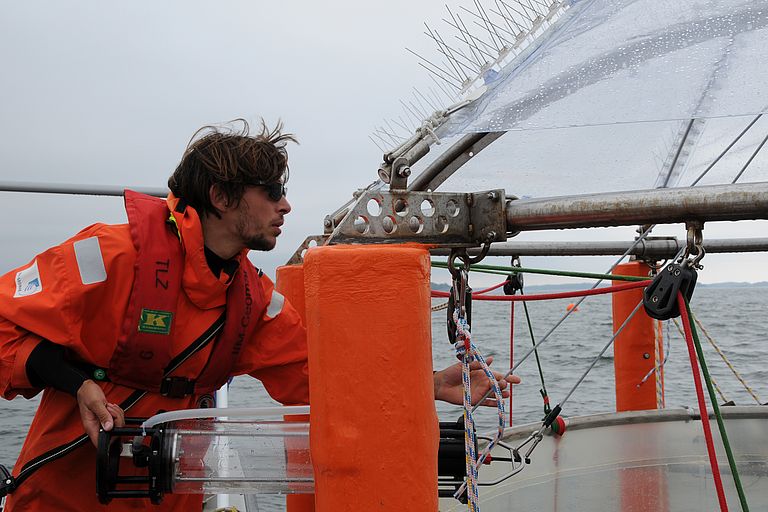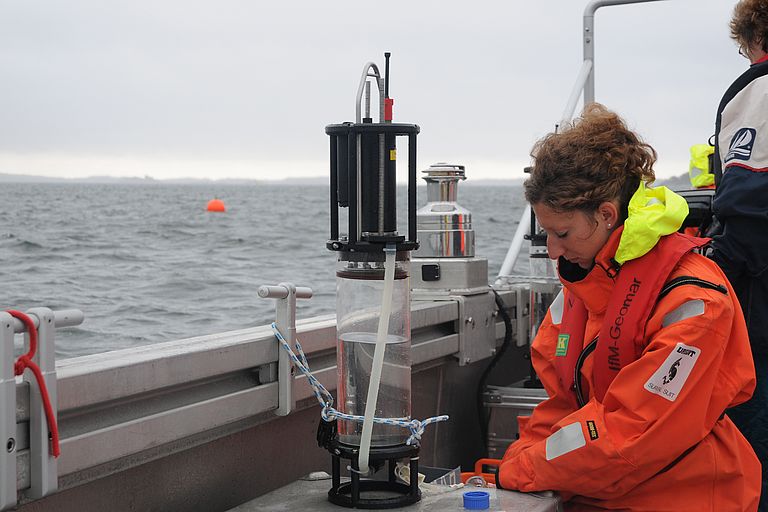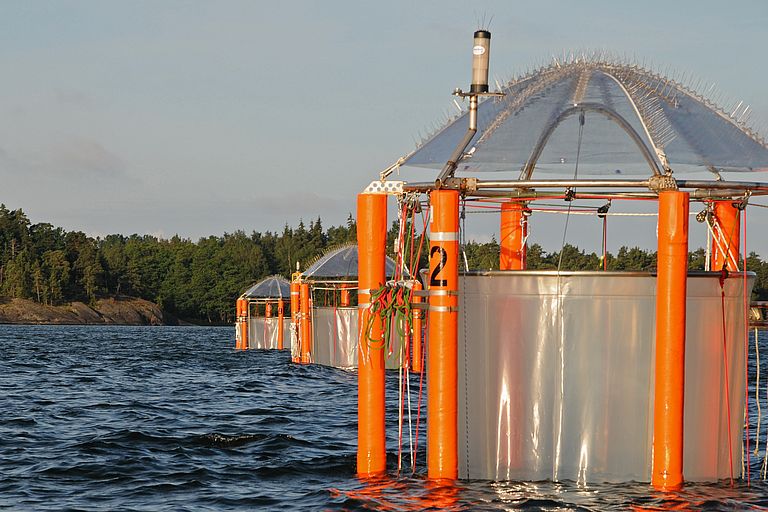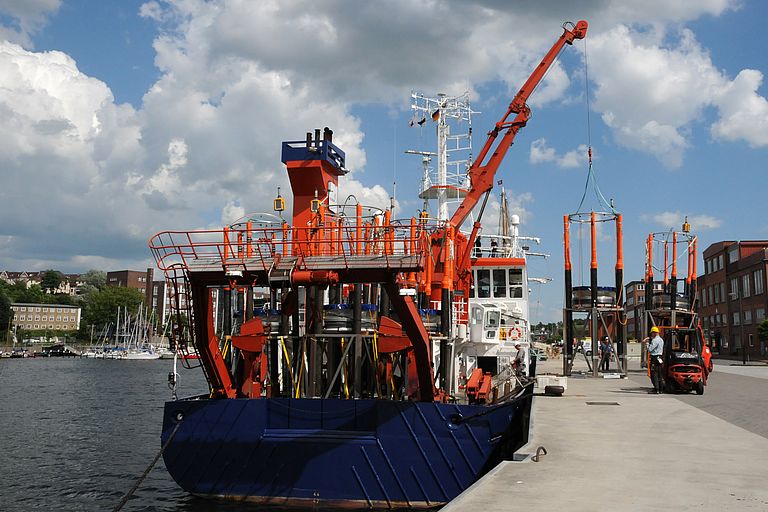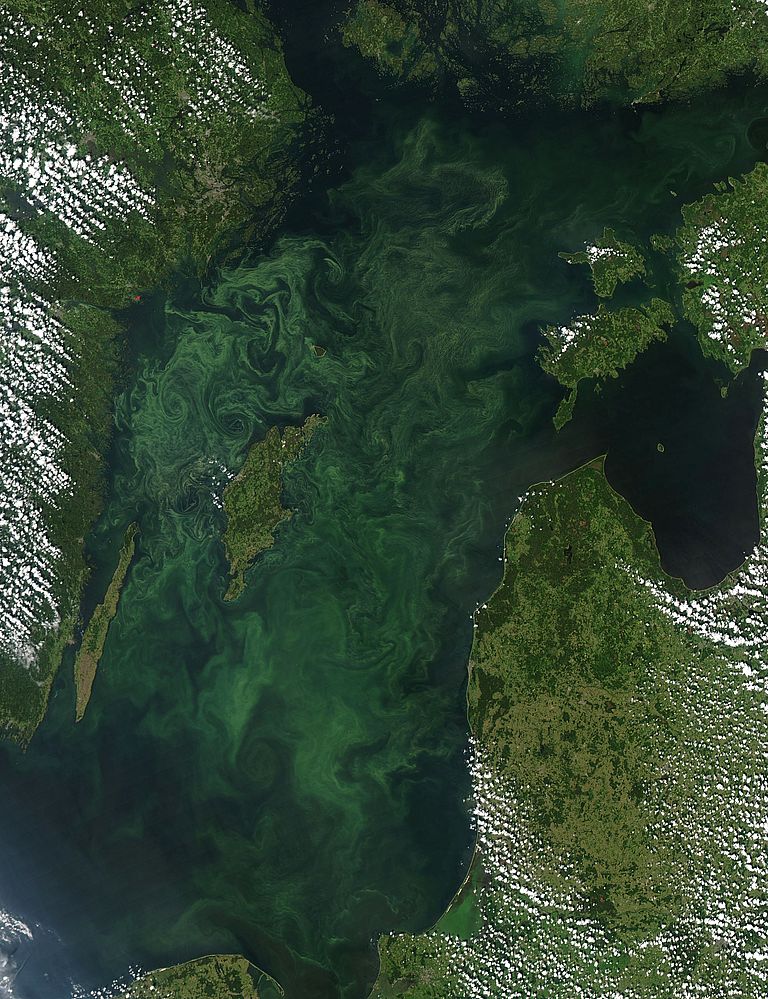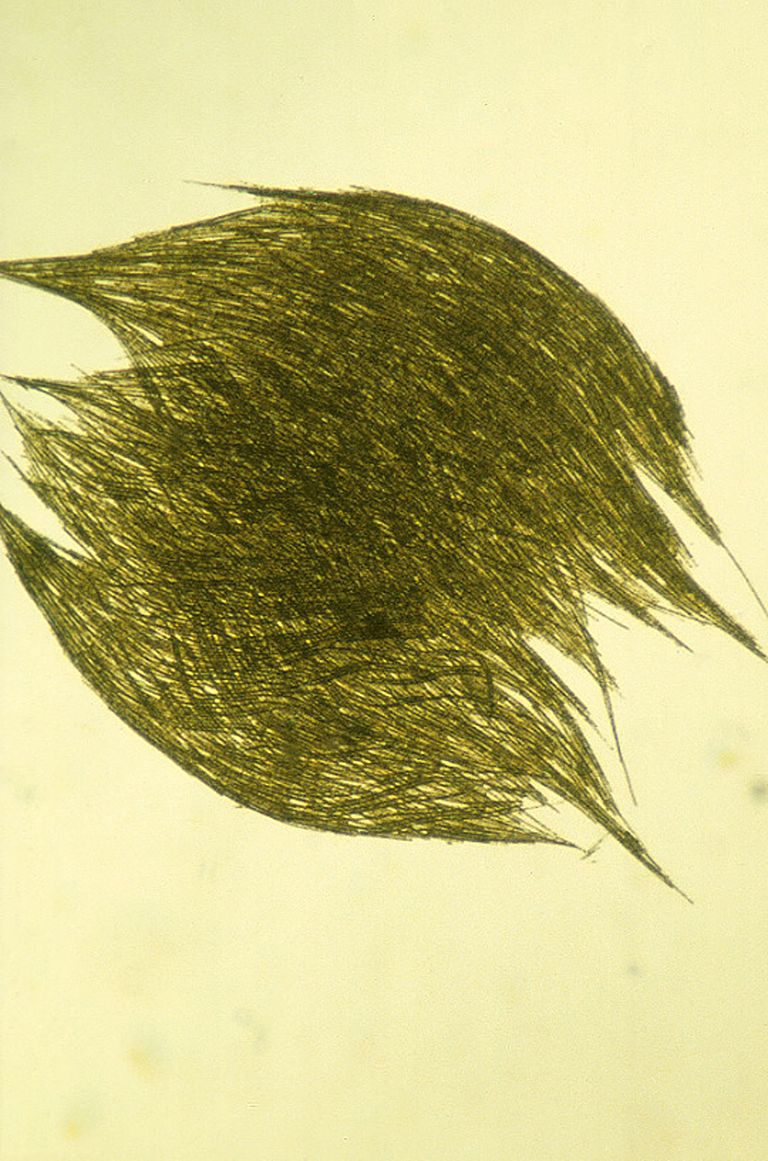Does climate change stimulate blue-green algae blooms in the baltic?
SOPRAN analyses the reactions of cyanobacteria to ocean acidification in a field experiment
Ocean acidification, a chemical process triggered by the uptake of carbon dioxide from the atmosphere, is a threat to many calcifying organisms. In the more acidic water, they have difficulties to build their shells and skeletons. But there seem to be creatures, too, that benefit from the change in ocean chemistry: Cyanobacteria. Some of those organisms are also known as “blue-green algae” are toxic to humans and animals – a reason why beaches have to be closed off during cyanobacteria blooms every summer.
Laboratory experiments show that a higher amount of carbon dioxide in sea water stimulates the bacteria’s growth. Scientists from SOPRAN (Surface Ocean Processes in the Anthropocene) investigate if this also is true for the Baltic Sea. For their field experiment, the German research vessel ALKOR brings nine mesocosms to Tvärminne Zoological Station at Finland’s southernmost tip. The mesocosms are anchored close to the coast. Their 25 metres long plastic tubes enclose 70 cubic metres of sea water that can be enriched with carbon dioxide. For eight weeks, scientist will analyse the development and collect samples for further measurements.
Images:
ALKOR loading the nine mesocosms. Photo: Maike Nicolai, GEOMAR
Sampling a mesocosm. Photo: Maike Nicolai, GEOMAR
The mesocosms off Tvärminne, Southern Finland. Photo: Maike Nicolai
Contakt:
Maike Nicolai (Kommunikation und Medien), Tel. 0431 600-2807, mnicolai(a)geomar.de
